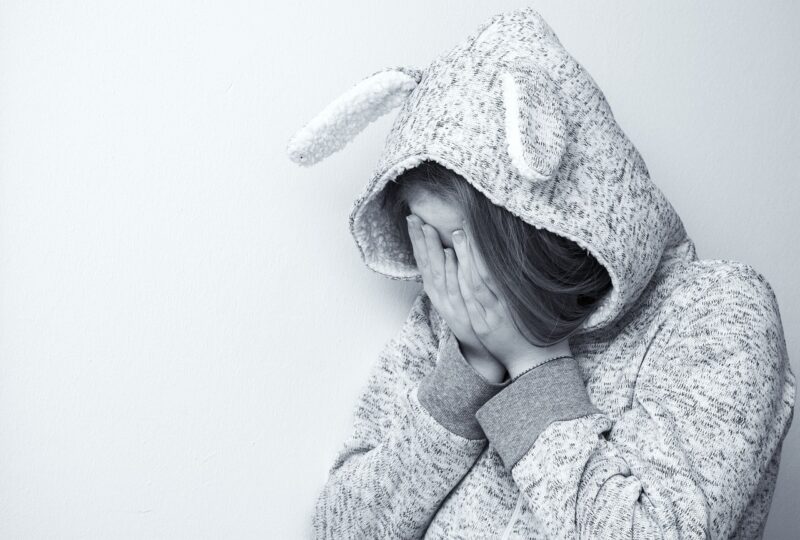The Science of Why People Cry and the Role of Tears in Emotion
November 17, 2024

Crying is a universal human experience, yet it remains one of the most misunderstood emotional responses. While many associate tears with sadness or grief, the act of crying serves various complex functions that are deep-rooted in our biology and psychology. In this comprehensive exploration, we will uncover the science behind why people cry, the different types of tears, and the profound role tears play in emotional regulation and social bonding.
1. The Physiological Basis of Crying
Crying is a multi-faceted phenomenon involving physiological changes that are triggered by a range of emotions. When we cry, our body releases tears, which contain a mix of water, salts, and proteins. These tears are produced by the lacrimal glands located above each eyeball and can be categorized into three distinct types:
- Basal Tears: These are continuously produced to lubricate the eyes, keeping them moist and free from irritants.
- Reflex Tears: Triggered by external factors such as onions, smoke, or dust, these tears help wash away irritants from the eye.
- Emotional Tears: These are shed in response to strong emotions such as sadness, joy, or frustration, and contain higher levels of stress hormones and other chemicals that are not found in the other types of tears.
The evolutionary significance of emotional crying suggests that it may have developed as a survival mechanism. By shedding tears in times of distress, individuals can elicit sympathy and support from others, strengthening social bonds within a community.
2. The Psychological Perspective: Why Do We Cry?
Psychologists have long been fascinated by the phenomenon of crying. Here are some key psychological perspectives that explain why we cry:
- Emotional Release: Crying can act as a form of catharsis. The release of tears may help to alleviate feelings of stress, sadness, or anger, providing a sense of relief after the act of crying. This emotional release may be linked to changes in brain chemistry, helping to restore emotional balance.
- Communication of Emotion: Tears are a non-verbal way of expressing emotions. They signal to others that we are in distress, inviting empathy and support. This social aspect of crying plays a crucial role in human interactions, fostering bonds between individuals and communities.
- Stress and Resilience: Studies suggest that crying can help the body cope with stress. Emotional tears contain higher levels of the stress hormone cortisol. By shedding these tears, individuals might be able to lower their overall stress levels and promote a sense of calm afterward, increasing resilience to future stressors.
Crying, therefore, serves as both a personal and social tool that enables individuals to navigate their emotional landscapes and communicate their needs to others.
3. The Benefits of Crying: Why Letting It Out Helps
While many may view crying as a sign of weakness, it is, in fact, a vital emotional coping mechanism with several benefits:
- Emotional Regulation: Crying can facilitate the processing of complex emotions by allowing individuals to release pent-up feelings, leading to improved mood and emotional clarity.
- Bonding and Support: Crying can invoke compassion and care from others, helping to strengthen existing relationships and create new ones based on shared human experiences.
- Physical Benefits: Emotional tears may have a detoxifying effect. Beyond facilitating emotional healing, they also help remove toxins from the body and may aid in regulating stress responses and hormone levels.
Understanding crying as a beneficial response can enrich our perception of emotional health, encouraging people to embrace their vulnerabilities rather than suppress them.
4. Cultural Views on Crying: Expressions of Strength or Weakness?
Cultural perceptions of crying vary significantly across societies. In many Western cultures, tears are often viewed as a sign of vulnerability or weakness, especially for men. Conversely, some cultures embrace crying as a natural expression of emotions and view it as an integral part of human experience.
Consider the following cultural attitudes toward crying:
- Western Cultures: In many Western societies, there’s a prevalent stigma surrounding crying, particularly among men. The socialization process encourages emotional suppression, which can lead to unhealthy coping mechanisms, such as substance abuse or aggression.
- Eastern Cultures: Many Eastern cultures celebrate emotional expression, including crying, as a way to demonstrate connectivity, compassion, and familial relationships. Particularly in confucian societies, showing emotion is often viewed as a respectful acknowledgment of shared human experiences.
The contrast in cultural perceptions highlights the importance of understanding that crying, far from being a weakness, can serve as a vital outlet for emotional expression, fostering healing within individuals and communities.
5. Modern Research: What Science Tells Us About Tears
Contemporary studies into the biochemistry of tears continue to reveal fascinating insights into their role in human emotion. Research findings indicate that emotional tears contain stress-related proteins and hormones; some studies have suggested that the act of crying may stimulate the release of endorphins, often referred to as the body’s natural painkillers, promoting a sense of relief and wellbeing.
The exploration of crying and its myriad implications has garnered attention in psychological and neurological studies, including:
- Neurobiological Response: Research suggests that crying triggers the brain’s reward centers, which may explain the feelings of satisfaction and calm after a good cry. In studies, participants report increased feelings of relief after releasing emotional tears, highlighting the connection between crying and emotional regulation.
- Tears and Empathy: Scientist have discovered that observing others cry can evoke feelings of empathy and a desire to console, activating mirror neurons in our brain that respond to emotional cues from others.
This burgeoning field of research sheds light on the social and hormonal underpinnings of crying, providing a deeper understanding of how tears serve as a crucial tool for emotional expression and regulation.
Conclusion: Embracing Crying as a Path to Healing
The science of crying reveals that tears are a reflection of our humanity and emotional depth. Rather than stigmatizing crying as a weakness, we should cherish it as an essential tool for emotional health and interpersonal connection. In a world where emotional struggles can feel isolating, tears remind us of our shared vulnerabilities – a beautiful testament to the strength of the human experience.
So the next time you feel the urge to cry, allow yourself to embrace it. Recognize crying as a natural part of life’s landscape – a release, a communicator, and a beautiful expression of our shared human journey.







